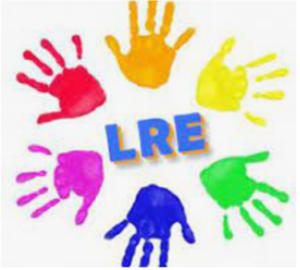Related Products
For Professionals
- Amplification
- Assessment of Student Skills, Challenges, Needs
- Early Childhood: Infants, Toddlers, Preschool
- Hearing Loss – Identification, Impact and Next Steps
- IDEA Law Summary Information
- Language and Speech Development Issues
- Legal Issues in Serving Children with Hearing Loss
- Listening (Auditory Skills) Development
- Planning to Meet Student Needs
- Self-Advocacy Skills for Students with Hearing Loss
- Self-Concept: How the Child with Hearing Loss Sees Himself
- Social Skills
- Speech Perception & Learning
Related Teacher Tools Takeout Items
Challenging Appropriate Education Services for Students who are DHH
 Part of the reality of deaf/hard of hearing as a low-incidence population is that the issues and needs due to the impact of hearing loss are relatively unrecognized and professionals in the field of DHH education must continually advocate for appropriate supports and services. This article summarizes a landmark, and little known, April 2019 publication by the US Office for Civil Rights and US Department of Education on deaf education. The guidance was intended to furnish state and local school agencies with specific steps to ensure students who are DHH are provided with a free and appropriate education.
Part of the reality of deaf/hard of hearing as a low-incidence population is that the issues and needs due to the impact of hearing loss are relatively unrecognized and professionals in the field of DHH education must continually advocate for appropriate supports and services. This article summarizes a landmark, and little known, April 2019 publication by the US Office for Civil Rights and US Department of Education on deaf education. The guidance was intended to furnish state and local school agencies with specific steps to ensure students who are DHH are provided with a free and appropriate education.
SOURCE: https://www2.ed.gov/about/offices/list/ocr/docs/hq9806.html
Document Summary: This publication by the Department of Education provides additional guidance about part B of the Individuals with Disabilities Education Act (IDEA) and section 504 of the Rehabilitation Act of 1973 (section 504) as they relate to the provision of appropriate education service to students who are deaf. This guidance is issued in response to concerns regarding Departmental policy on the provision of a free appropriate public education (FAPE) to students who are deaf. Many of these concerns were expressed in the report of the Commission on Education of the Deaf. This guidance is intended to furnish State and local education agency personnel with background information and specific steps that will help to ensure that children and youth who are deaf are provided with a free appropriate public education. It also describes procedural safeguards that ensure parents are knowledgeable about their rights and about placement decisions made by public agencies. Italics have been added below by the article author.
Providing a Free and Appropriate Public Education
The Secretary of Education believes that the unique communication and related needs of many children who are deaf have not been adequately considered in the development of their IEPs. To assist public agencies in carrying out their responsibilities for children who are deaf, the Department provides the following guidance. The Secretary believes it is important that State and local education agencies, in developing an IEP for a child who is deaf, take into consideration such factors as:
- Communication needs and the child’s and family’s preferred mode of communication; How do they communicate?
- Linguistic needs; How much do they understand – language comprehension? Rate of presentation – slow, fast?
- Severity of hearing loss and potential for using residual hearing; Estimation of level of access to communication?
- Academic level; and How much delay in language/academics/ability to participate as compared to peers?
- Social, emotional, and cultural needs including opportunities for peer interactions and communication. Access to interactions with other students who are DHH? Challenges in group work or peer-to-peer communication? Actions to deal with the student being a teasing target?
In addition, the particular needs of an individual child may require the consideration of additional factors, i.e.,
- The nature and severity of some children’s needs will require the consideration of curriculum content and method of curriculum delivery in determining how those needs can be met.
- Including evaluators who are knowledgeable about these specific factors as part of the multidisciplinary team evaluating the student will help ensure that the deaf student’s needs are correctly identified.
Least Restrictive Environment
The Secretary is concerned that the least restrictive environment provisions of the IDEA and Section 504 are interpreted, incorrectly, to require the placement of some children who are deaf in programs that may not meet the individual student’s educational needs.

- Any setting, including a regular classroom, that prevents a child who is deaf from receiving an appropriate education that meets his or her needs including communication needs is not the LRE for that individual child. How much language can the child access and comprehend in the classroom? If hearing loss is limiting access and/or direct communication, or severity of language delay interferes with comprehension of instructional materials thereby preventing the student from keeping pace with peers, then provision of FAPE needs to be considered to identify a placement where the child can comprehend/access appropriately.
- Any setting which does not meet the communication and related needs of a child who is deaf, and therefore does not allow for the provision of FAPE, cannot be considered the LRE for that child. Full time placement in an inclusion setting satisfies FAPE only if the child can access communication effectively.
Placement
The provision of FAPE is paramount, and the individual placement determination about LRE is to be considered within the context of FAPE. The Secretary is concerned that some public agencies have misapplied the LRE provision by presuming that placements in or closer to the regular classroom are required for children who are deaf, without taking into consideration the range of communication and related needs that must be addressed in order to provide appropriate services.
| The Secretary recognizes that the regular classroom is an appropriate placement for some children who are deaf, but for others it is not. The overriding rule regarding placement is that placement decisions must be made on an individual basis. |
The Secretary recognizes that regular educational settings are appropriate and adaptable to meet the unique needs of particular children who are deaf. For others, a center or special school may be the least restrictive environment in which the child’s unique needs can be met.
A full range of alternative placements as described at 34 CFR 300.551(a) and (b)(1) of the IDEA regulations must be available to the extent necessary to implement each child’s IEP. There are cases when the nature of the disability and the individual child’s needs dictate a specialized setting that provides structured curriculum or special methods of teaching. Just as placement in the regular educational setting is required when it is appropriate for the unique needs of a child who is deaf, so is removal from the regular educational setting required when the child’s needs cannot be met in that setting with the use of supplementary aids and services.
The obligation to fully inform parents includes informing the parents that the public agency is required to have a full continuum of placement options available to meet the needs of children with disabilities, including instruction in regular classes, special classes, special schools, home instruction, and instruction in hospitals and institutions.
Refer to the full document for all of this information provided by the US Department of Education.
Author: Karen Anderson
